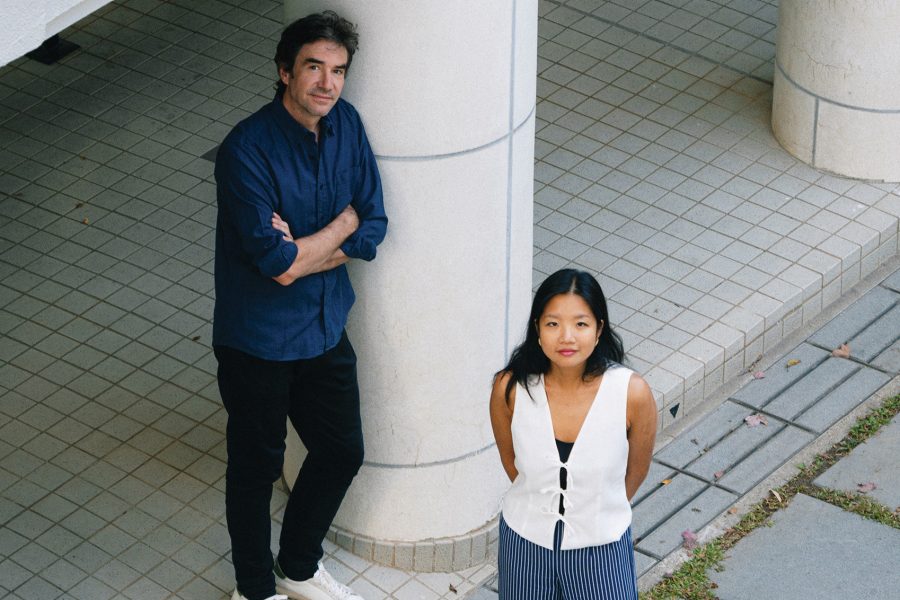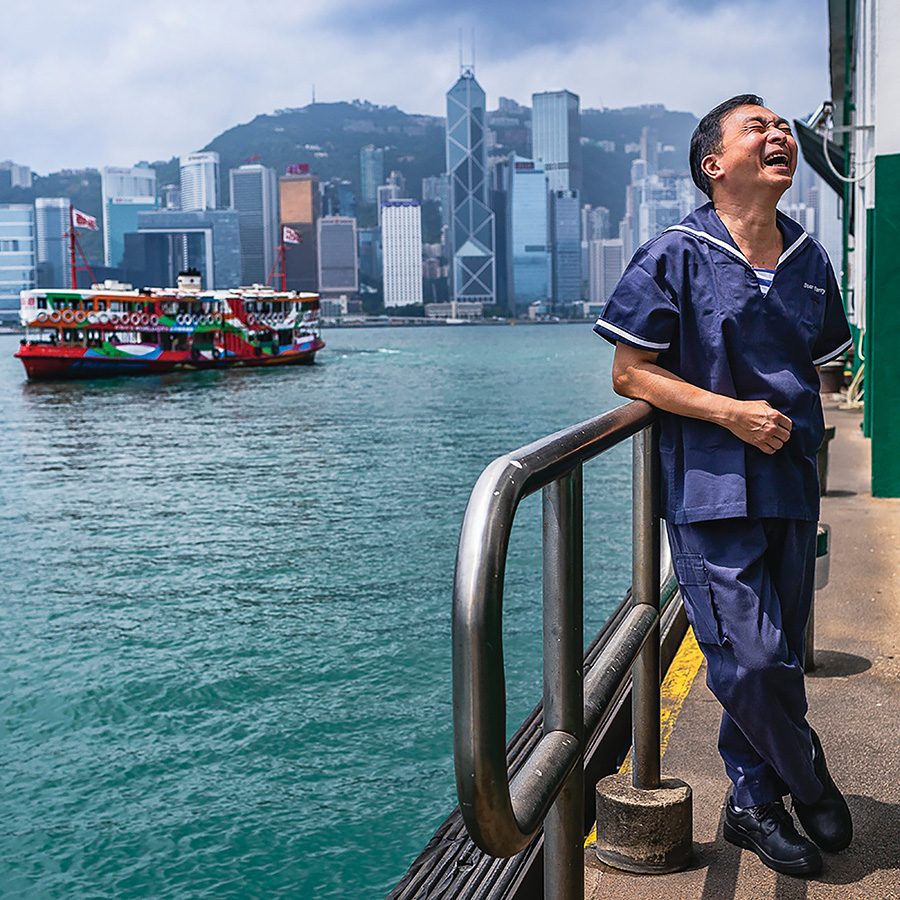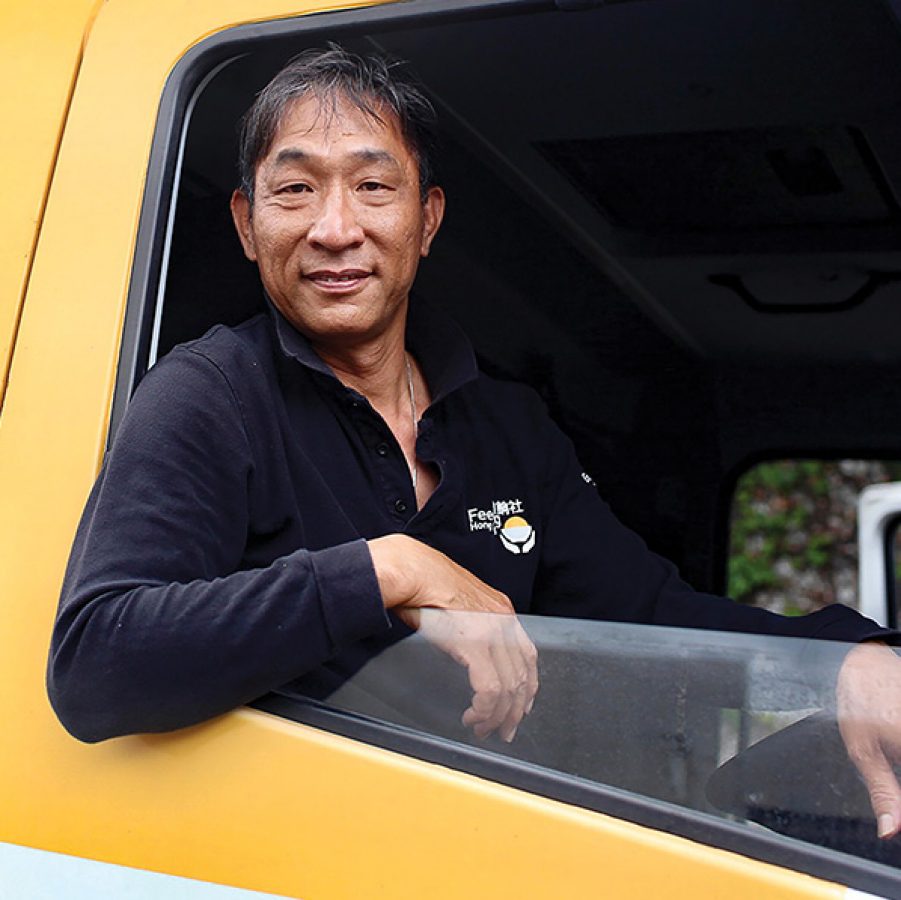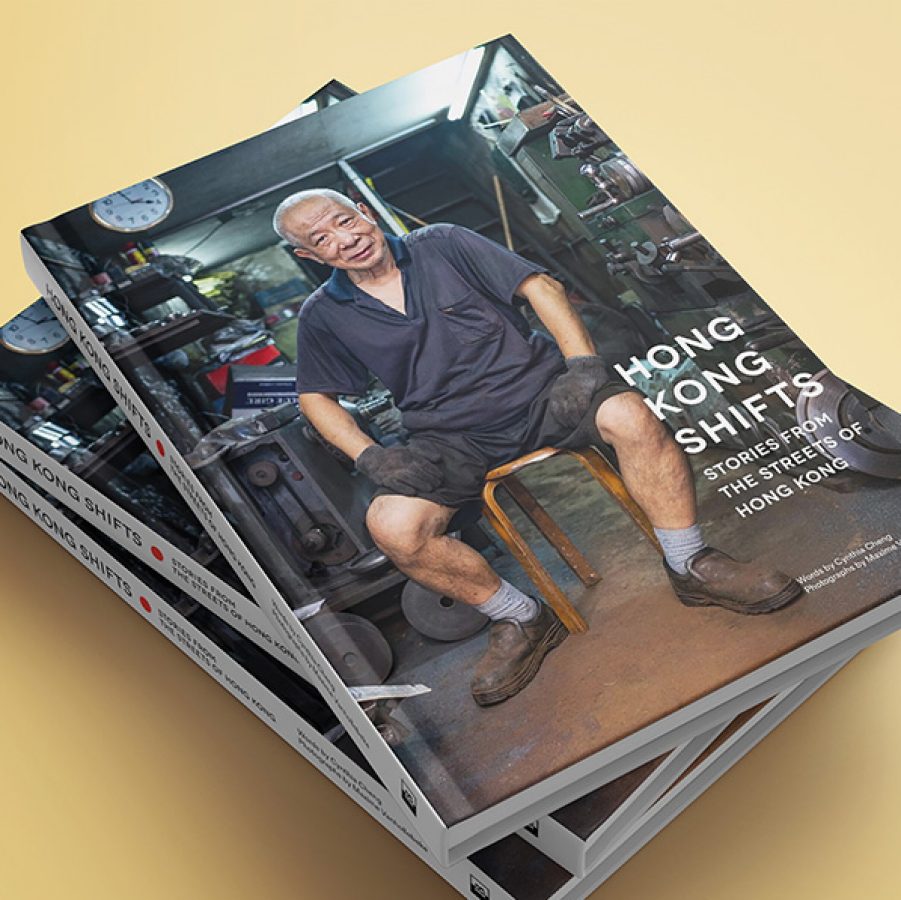Telling stories of Hong Kong’s overlooked shift workers

It started with an invitation to lunch. Friends Maxime Vanhollebeke and Cynthia Cheng were curious about residential security guard Mei Fung’s life and wanted to know more. After eating together at a cha chaan teng diner, Vanhollebeke took Fung’s photo and Cheng recorded her story. Hong Kong Shifts was born – starting with an Instagram account and now immortalised in a new book.
Vanhollebeke and Cheng describe Hong Kong Shifts as a social impact platform and community project, which uses storytelling to connect, empower and mobilise while promoting inclusion and diversity. They’re dedicated to profiling the multitude of oft-overlooked shift workers who keep the city running through stories shared in English and Chinese on the project’s website and social media.
“It came from curiosity and a desire to bring to light a lot of the people working around us in our day-to-day lives,” Cheng explains. “We wanted to draw out those stories and encourage people to engage with their community.”
The project is galvanised by the belief that everyone has a story to tell – we just need to reach out and listen. So that’s what the founders, both lawyers, have done over the past five years. Their process has stayed close to this founding principle since the early days of the project: after picking a district in Hong Kong to explore, the pair set off and see which kinds of shift workers they encounter. Cheng, who speaks Cantonese, typically approaches the subject first to build rapport. With the interviewee’s consent, Vanhollebeke takes photos of them in their professional environs while Cheng conducts the interview and writes their story down in a notebook.
“We want to get authentic stories coming from a fluid conversation,” Vanhollebeke says.
Cheng adds, “We also make it clear to our interviewees that if there’s anything they don’t want to discuss, that’s totally fine, so they are in full control of the interview process and content.
“We believe that storytelling is a great tool to connect and empower people. It can be empowering for the person who’s sharing the story, but we’ve learned that it’s also empowering for the person who is seeking out the story. This project has encouraged us to get outside of our comfort zones and engage with people and communities that we might not engage with mindfully in our busy routines.”

Credit: Hong Kong Shifts

Credit: Hong Kong Shifts
Hong Kong Shifts has taken the pair to all corners of the territory. Some of the interviewees are in professions that are emblematic of Hong Kong. Take Fai, a sailor aboard the Star Ferry, who’s depicted mid-laugh at the Tsim Sha Tsui pier with Hong Kong’s skyline behind him. Other subjects perform vital yet underappreciated work, such as Fa, a cheerful street cleaner on Lamma Island.
The project has also highlighted Hong Kong’s sunset industries, as in the case of Yuen, a fountain pen repairer in Sham Shui Po. Even Marvix, a member of Cathay Pacific’s cabin crew, has been featured, photographed on board an aircraft.

Credit: Hong Kong Shifts
Hong Kong Shifts has since branched out into collaborations with non-governmental organisations, profiling workers such as Kam, a care home nurse with Helping Hand , and Sing, a lorry driver for Feeding Hong Kong . “We realised that there are so many stories in the nonprofit sector that are worthy of being told,” Cheng says. “So we started to work with charities and social enterprises to tell the story of their organisation and mission through the lens of their people. Human-centred narratives are a powerful way to tell the story of the greater cause.” Hong Kong Shifts also runs workshops for NGOs, many of which work with vulnerable people, equipping their staff with storytelling skills so they can communicate effectively with their stakeholders.

Credit: Hong Kong Shifts
In July, Hong Kong Shifts made the jump from digital to print with Hong Kong Shifts: Stories from the Streets of Hong Kong , a collection of 50 photographs accompanied by bilingual stories. Cheng and Vanhollebeke made sure to represent a variety of professions and neighbourhoods. “The visuals also had to be strong,” adds Vanhollebeke. “We selected photographs that were powerful and showed more of the work environment. All the stories are interesting in their own way.”
Cheng and Vanhollebeke plan to keep growing their platform: there are plenty of occupations that they’re eager to cover, such as firefighting. After all, certain shift workers are harder to run into by chance. Sometimes, it can take months to set up an interview, such as when they interviewed cargo ship seafarers during the pandemic. Through it all, their curiosity and desire to represent people from all walks of life have been a constant source of motivation.
“The project has a very simple message: it invites everyone to live in a more connected way and to pay more attention to the people around them,” Vanhollebeke says. “If these stories can contribute to that, it’d be more than we could wish for.”
More inspiration
Hong Kong travel information
- China – the Chinese Mainland, Hong Kong SAR, Macao SAR and Taiwan Region
- Hong Kong SAR - English
- Chinese Mainland (China) - English
- Taiwan, China - English
- 香港特別行政區 - 繁體中文
- 中国內地 - 简体中文
- 中國台灣 - 繁體中文
- Africa
- South Africa - English
- Asia
- Bangladesh - English
- Korea - English
- Singapore - English
- Cambodia - English
- 한국 - 한국어
- Sri Lanka - English
- India - English
- Malaysia - English
- Thailand - English
- Indonesia - English
- Maldives - English
- ประเทศไทย - ภาษาไทย
- Indonesia - Bahasa Indonesia
- Myanmar - English
- Vietnam - English
- Japan - English
- Nepal - English
- Việt Nam - tiếng Việt
- 日本 - 日本語
- Philippines - English
- Australasia
- Australia - English
- New Zealand - English